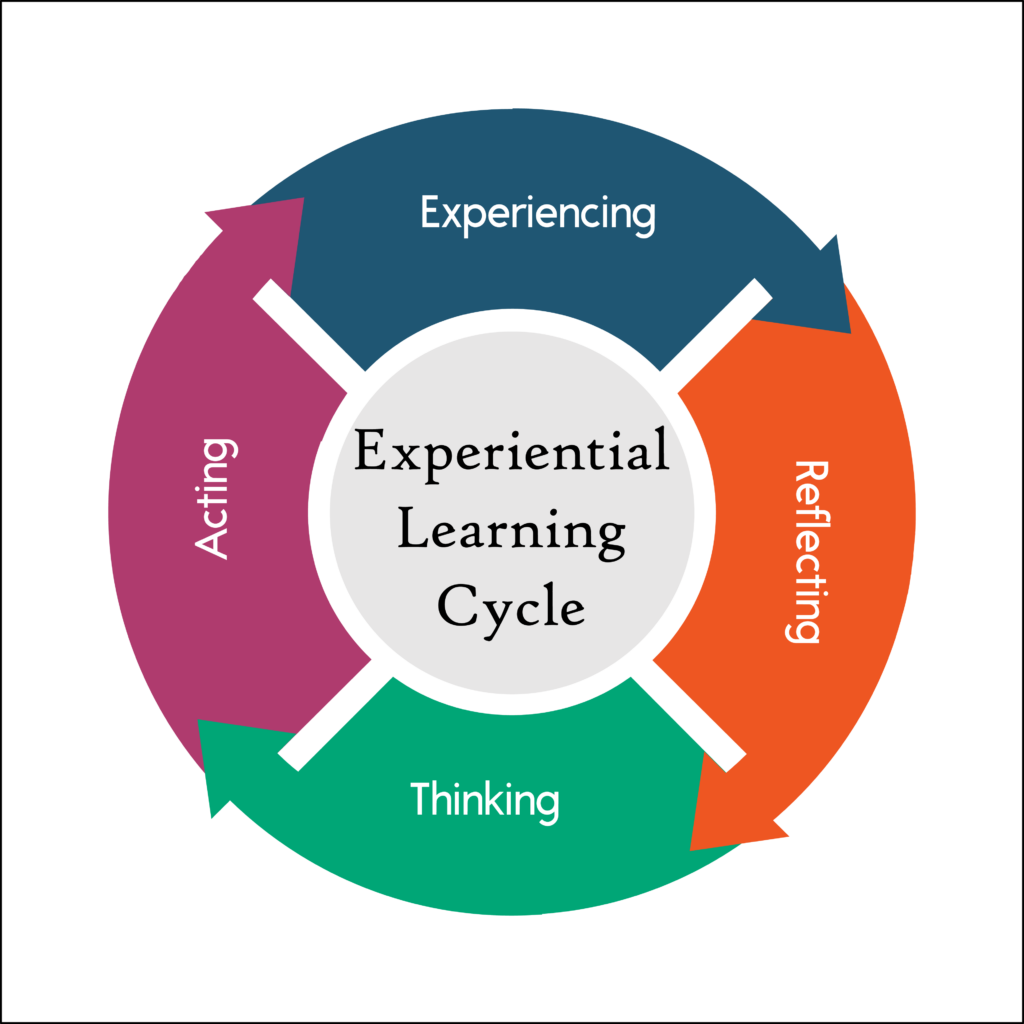 illustration from Peregrine Global Services
illustration from Peregrine Global Services
Beyond the Textbook: Engaging Students Through Experiential Learning
In today's dynamic world, traditional textbook-based education needs a boost. Discover innovative approaches to experiential learning that prepare students for real-world challenges.
What is Experiential Learning?
Experiential learning is all about 'learning by doing.' It's a process where knowledge comes alive through experience. Instead of just reading, students actively participate, reflect, and apply what they learn. This creates a deeper, lasting understanding.
Key Characteristics:
- Active Participation: Students are fully involved.
- Real-World Relevance: Activities connect to real situations.
- Reflection: Students analyze their experiences.
- Application: Knowledge is applied to new problems.
- Collaboration: Teamwork enhances communication skills.
Benefits of Experiential Learning
Experiential learning offers numerous advantages:
- Enhanced Knowledge Retention: Active participation improves memory.
- Critical Thinking Skills: Students analyze and solve problems.
- Creativity and Innovation: Experimentation is encouraged.
- Improved Communication: Team projects foster communication.
- Increased Engagement: Learning becomes more motivating.
- Real-World Preparation: Students gain skills for future success.
Innovative Approaches
Here are some exciting ways to implement experiential learning:
1. Project-Based Learning (PBL)
Students tackle real-world problems through extended projects, demonstrating their knowledge with public presentations.
Benefits of PBL:
- Develops critical thinking
- Promotes collaboration
- Increases engagement
- Provides real-world experience
Examples:
- Designing a sustainable garden
- Creating a marketing campaign
- Developing a website
- Building a robot
2. Service-Learning
Combines community service with academic learning, allowing students to apply their skills while addressing community needs.
Benefits of Service-Learning:
- Promotes civic engagement
- Enhances understanding of social issues
- Develops empathy
- Provides real-world experience
Examples:
- Tutoring students
- Volunteering at a shelter
- Cleaning up a park
- Organizing a food drive
3. Simulations and Role-Playing
Realistic scenarios allow students to practice skills in a safe environment, useful for subjects like business and healthcare.
Benefits:
- Develops decision-making skills
- Improves communication
- Enhances understanding of systems
- Provides a safe environment
Examples:
- Simulating a negotiation
- Role-playing a historical event
- Simulating a medical emergency
- Participating in a mock trial
4. Internships and Apprenticeships
Provide real-world work experience, with internships offering short-term exploration and apprenticeships providing hands-on training.
Benefits:
- Provides work experience
- Develops professional skills
- Builds a network
- Increases job prospects
Examples:
- Interning at an agency
- Apprenticing as an electrician
- Interning at a hospital
- Apprenticing as a chef
5. Outdoor Education
Uses outdoor experiences to promote personal growth, teamwork, and environmental awareness through activities like hiking and camping.
Benefits:
- Promotes fitness
- Develops teamwork
- Enhances awareness
- Builds confidence
Examples:
- Hiking in a park
- Camping
- Rock climbing
- Kayaking
6. Gamification
Incorporates game elements to motivate students and increase engagement, making learning fun and enjoyable.
Benefits:
- Increases engagement
- Provides feedback
- Promotes problem-solving
- Makes learning fun
Examples:
- Using a point system
- Using badges
- Using a leaderboard
- Playing educational games
Implementing Experiential Learning
Tips for educators:
- Start small
- Connect to the curriculum
- Provide clear instructions
- Facilitate reflection
- Provide feedback
- Assess learning
- Collaborate with others
Challenges
- Time commitment
- Resource requirements
- Risk management
- Assessment challenges
- Equity and access
Conclusion
Experiential learning empowers students to become active, engaged, and lifelong learners. Embrace these innovative approaches to bring learning to life!
Ready to transform your classroom? Explore resources and connect with other educators!
Published on March 29, 2025
reference: Various Article on internet
Gema
Wordsmith and content writer passionate about creating high-quality content that informs, entertains, and inspires. Let me bring your brand's story to life.
All stories by : Gema

0 Comments